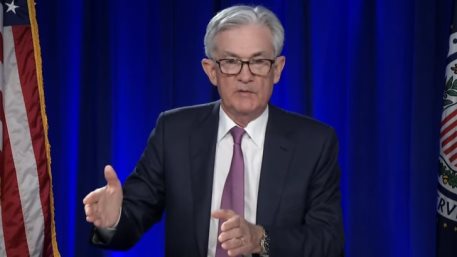
Global financial markets are entering a pivotal week marked by critical data releases, central bank decisions, and escalating trade tensions. From revived US-China tariff disputes to central banks shaping monetary outlooks, investors will be watching closely for any clues that could influence risk sentiment, interest rate expectations, and equity performance.
Renewed Tariff Tensions Spark Volatility Concerns
One of the most closely-watched developments is the return of trade war rhetoric following the revival of significant global tariffs introduced under the Trump administration. The U.S. has reimposed wide-ranging duties targeting strategic Chinese goods, citing national security and trade imbalances. In response, China has already enacted its first wave of counter tariffs, focusing on agricultural products and key US exports.
Now, attention turns to other major economies, with the EU and key Asian trade partners reportedly preparing their own retaliatory measures. The resulting tit-for-tat could weigh heavily on global trade volumes and corporate supply chains. Markets are already beginning to price in the impact, with increased volatility in industrial and semiconductor sectors particularly exposed to global trade.
Central Bank Day: Spotlight on Policy Divergence
Wednesday will be a major inflection point for markets as multiple central bank events are scheduled:
Reserve Bank of New Zealand (RBNZ): Economists anticipate a 25 basis point rate cut, taking the official cash rate from 3.75% to 3.50%. With inflation easing and growth momentum slowing, the RBNZ may adopt a dovish tone, potentially signaling further easing in the months ahead.
Bank of Japan (BoJ): Governor Kazuo Ueda is set to speak, and investors will be looking for signs of a potential shift away from ultra-loose policy. While no rate move is expected, any hawkish undertone could strengthen the yen and reverberate across Asia-Pacific currencies.
Federal Reserve: The FOMC Meeting Minutes will be released, providing a deeper look into the Fed’s most recent policy decision. While rates were held steady, markets will scrutinize the minutes for any hidden cues about the Fed’s inflation concerns, labor market assessments, and long-term policy bias. Any hint of a more hawkish tilt could push yields higher and pressure equities.
Inflation in Focus: US and China CPI to Test Market Expectations
Inflation data from the world’s two largest economies will also be released this week, with expectations pointing to modest increases:
China: After a surprise deflationary print last month, Consumer Price Index (CPI) is expected to rise by 0.1% month-over-month, a potential sign that domestic demand is stabilizing. While the year-on-year figure remains subdued, even a slight uptick could reduce pressure on the People’s Bank of China to ease policy aggressively.
United States: US CPI is expected to show a 0.1% monthly increase, with the annual rate slowing to 2.6% (from 2.8% previously). Core inflation will be key, particularly in services. Any upside surprise could reignite fears of a longer-than-expected inflationary cycle and challenge the Fed's current "higher-for-longer" stance.
UK GDP and US Sentiment Data Cap Off the Week
Friday rounds out the week with a flurry of key macroeconomic releases:
UK GDP: The UK economy is projected to show 0.1% growth in February, a modest rebound from the prior month’s 0.1% contraction. The data will provide crucial insight into whether the UK is emerging from its stagflation trap.
US Producer Price Index (PPI) and Consumer Sentiment: PPI will offer another inflation signal ahead of next month’s CPI report. Meanwhile, the University of Michigan's Consumer Sentiment Index, along with inflation expectations, will gauge how households are perceiving price pressures heading into Q2.
Conclusion
This week is a critical juncture for global markets. The interplay between trade tensions, central bank decisions, and inflation data could significantly shift the narrative for interest rates, equities, and currencies. Investors should brace for volatility and be prepared to reassess their positioning based on emerging signals.
As uncertainty looms, staying informed and nimble will be key in navigating what could be a turning point for global financial markets.




















